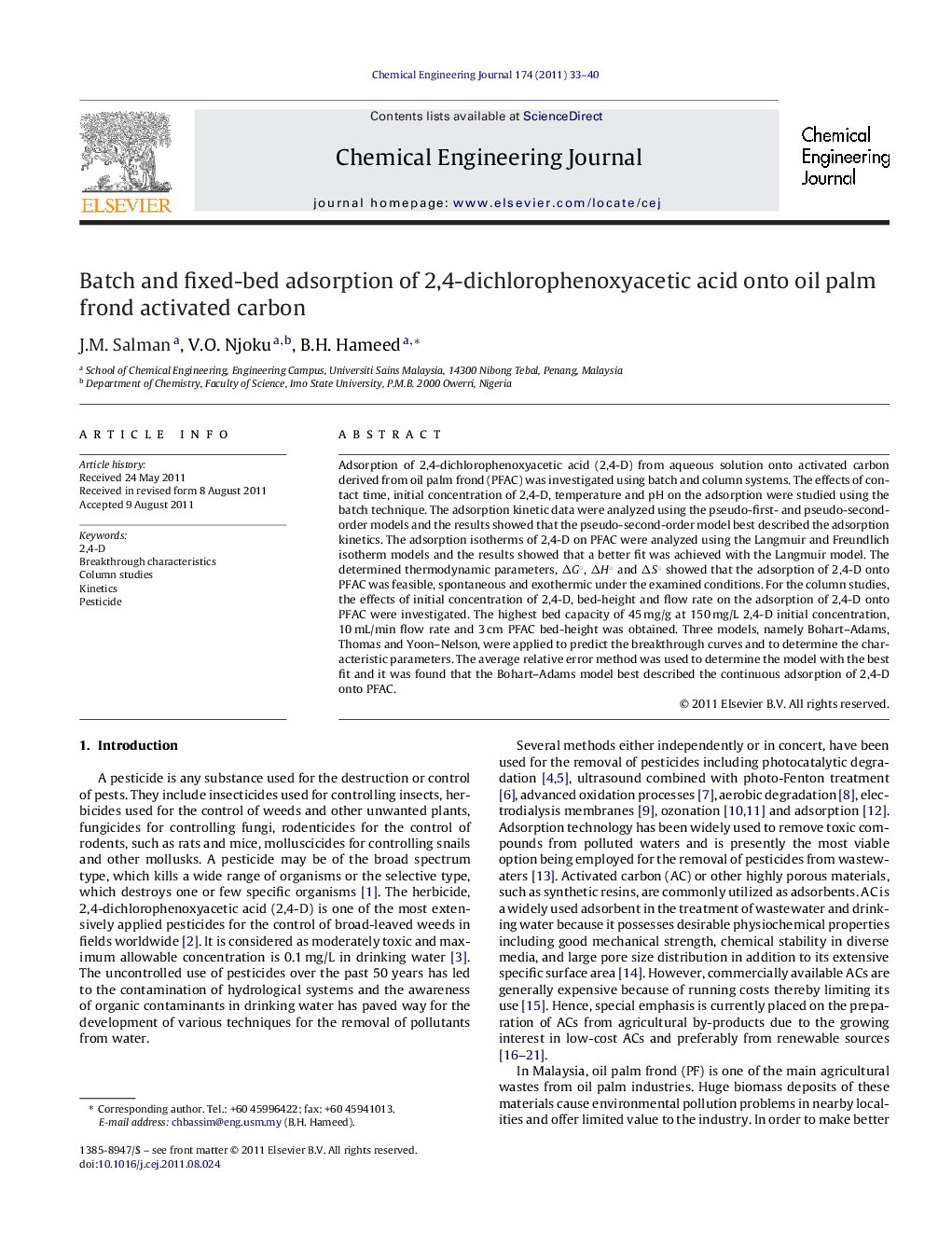| کد مقاله | کد نشریه | سال انتشار | مقاله انگلیسی | نسخه تمام متن |
|---|---|---|---|---|
| 150502 | 456451 | 2011 | 8 صفحه PDF | دانلود رایگان |

Adsorption of 2,4-dichlorophenoxyacetic acid (2,4-D) from aqueous solution onto activated carbon derived from oil palm frond (PFAC) was investigated using batch and column systems. The effects of contact time, initial concentration of 2,4-D, temperature and pH on the adsorption were studied using the batch technique. The adsorption kinetic data were analyzed using the pseudo-first- and pseudo-second-order models and the results showed that the pseudo-second-order model best described the adsorption kinetics. The adsorption isotherms of 2,4-D on PFAC were analyzed using the Langmuir and Freundlich isotherm models and the results showed that a better fit was achieved with the Langmuir model. The determined thermodynamic parameters, ΔG°, ΔH° and ΔS° showed that the adsorption of 2,4-D onto PFAC was feasible, spontaneous and exothermic under the examined conditions. For the column studies, the effects of initial concentration of 2,4-D, bed-height and flow rate on the adsorption of 2,4-D onto PFAC were investigated. The highest bed capacity of 45 mg/g at 150 mg/L 2,4-D initial concentration, 10 mL/min flow rate and 3 cm PFAC bed-height was obtained. Three models, namely Bohart–Adams, Thomas and Yoon–Nelson, were applied to predict the breakthrough curves and to determine the characteristic parameters. The average relative error method was used to determine the model with the best fit and it was found that the Bohart–Adams model best described the continuous adsorption of 2,4-D onto PFAC.
► Oil palm frond was found to be an appropriate material for producing activated carbon.
► Palm frond activated carbon (PFAC) was prepared by chemical activation with KOH.
► PFAC was characterized by surface and pore analysis and FT-IR spectroscopy.
► Batch and fixed-bed techniques were used to study the adsorption of 2,4-D by PFAC.
► Effects of operational parameters affecting the adsorption were investigated.
Journal: Chemical Engineering Journal - Volume 174, Issue 1, 15 October 2011, Pages 33–40